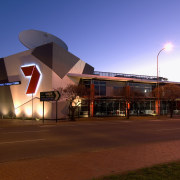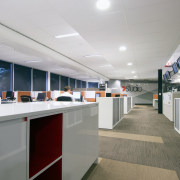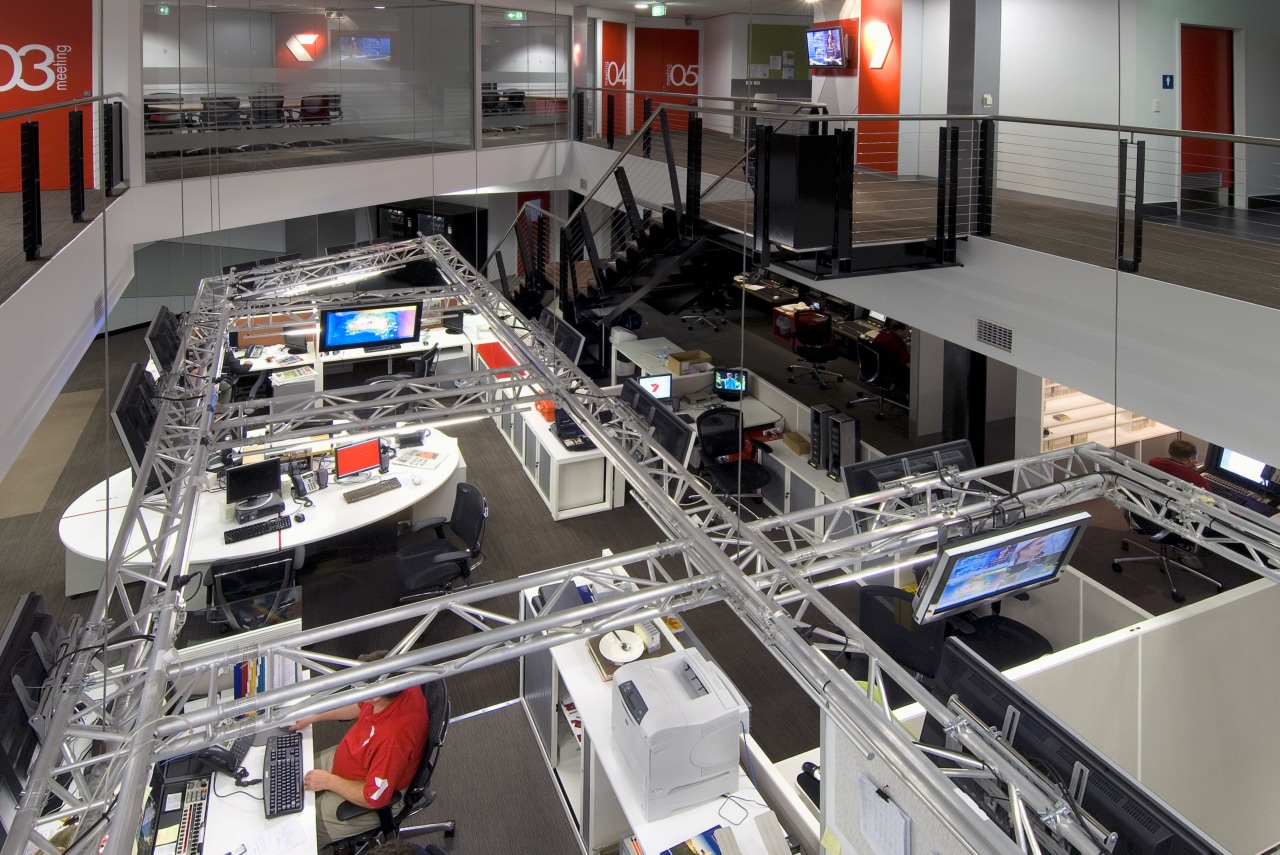Ground control
Sporting a geometric shape your maths teacher never showed you, Adelaide's dynamic new Channel Seven building signals its purpose loud and clear

Often enough, a company's largest calling card is its building. From the structure to the signage to the interiors, every aspect of a well-designed project reinforces the company's business and branding.
The new Channel Seven building, by architectural firm Hames Sharley, sits at a gateway location seen by thousands of motorists on a daily basis. Director and design architect Caillin Howard describes the building's pulling power from the outside.
"Set on a modest-sized but prominent corner site, the building makes up for in drama what it lacks in scale," says Howard. "The project comprises two levels of offices connected to a large studio space, with ancillary editing rooms and a deck joined to both.
"The decision was made to bring the essence of the television station's business to the fore. To this end the double-height studio is pushed out to the corner of the site, with the offices demurely plugged in behind."
Hames Sharley designed the studio as a distorted cube that redresses the foreshortening perspective of a block when viewed end on. In technical vernacular, the structure presents a grouping of geometric shapes articulated by a breakdown in the rectilinear form.

The building's distinctive shape and strong signage, and the intentionally prominent placement of a communications tower and satellite dishes, leave passers-by in no doubt as to the building's function, nor Channel Seven's forward-looking ethos.
All four sides of the angular structure are clad in grey with the Channel Seven logo in prominence this includes the side fronting on and interconnecting with the company's two levels of office space.
"We wanted every aspect of the building to be an ongoing reminder of its function. Having the building fold in on itself where the studio and offices connect bringing the outside facade into interior prominence helps achieve this," says Howard.
Interior designer on the project Claire D'Adorante says this ongoing iteration of the branding and core business is followed through on the building's interior.
"Channel Seven's corporate red set against a contemporary charcoal is used for the internal fit-out as well as on the base building," she says. "To balance these tones, a sense of warmth and welcome is achieved in office areas by introducing dark brown carpeting. Natural tones are continued in the staff breakout areas, with vibrant green acoustic panels."
However, as with the television station's base building, the physical structuring of the office interiors reinforces Channel Seven's raison d'eªtre.
"Communication is clearly a key objective for a television studio and this includes communication between staff," says D'Adorante. "To enable this, the two levels of offices are connected visually by a central void."
The void is fitted with an equipment truss system that also visually reinforces the studio's stock in trade. While this is partly a cosmetic inclusion, it also provides a functional purpose.
"On the lower level of offices, a large counter-weighted door slides up out of sight, connecting the offices directly to the studio. The truss system provides for an extra-long camera shot through this door into the studio proper."
Other features include television sets ranked prominently around the offices, providing instant visual information and, again, reminding staff and visitors of Channel Seven's core business.
Credit list
Architect
Construction company
Quantity surveyor
Cladding
Window and door joinery
Flooring
Joinery
Internal graphics
Interior designer
Civil, mechanical and electrical engineer
Landscaping
Roofing
Hardware
Furniture
Signage
Story by: Trendsideas
Home kitchen bathroom commercial design
Diving into nature
Classic looks, contemporary efficiency
Personality plus






